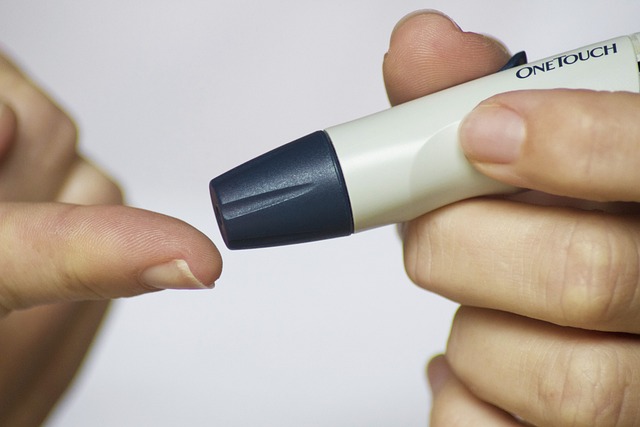Diabetic service dogs play a crucial role in the lives of individuals managing diabetes, providing invaluable assistance in detecting blood sugar fluctuations and offering support during emergencies. However, the process of selecting and training a diabetic service dog requires careful consideration and understanding. In this comprehensive guide, we'll delve into the essential aspects of choosing the right diabetic service dog and ensuring proper training to optimize their performance. Whether you're considering getting a diabetic service dog or seeking to enhance your existing partnership, this article will provide valuable insights to empower you in this journey.
Understanding Diabetic Service Dogs
Diabetic service dogs, also known as diabetic alert dogs (DADs), are specially trained canines that assist individuals with diabetes in managing their condition. These remarkable animals possess an acute sense of smell, enabling them to detect changes in their handler's blood sugar levels through scent cues. Upon detection, diabetic service dogs alert their handlers, allowing them to take necessary precautions or administer medication promptly.
Selecting the Right Diabetic Service Dog
Choosing the right diabetic service dog is a crucial step that requires careful consideration of various factors:
1. Characteristics to Look for in a Diabetic Service Dog
- Temperament and Personality Traits: Ideal diabetic service dogs exhibit traits such as attentiveness, alertness, and a strong desire to please.
- Size and Breed Considerations: While any breed can potentially become a diabetic service dog, smaller breeds are often preferred for their portability and agility.
- Health and Genetic Predispositions: Opt for dogs with good overall health and consider potential genetic predispositions to certain health conditions.
2. Finding a Reputable Trainer or Organization
- Researching Credible Training Programs or Organizations: Look for trainers or organizations with a proven track record of successfully training diabetic service dogs.
- Checking References and Reviews: Seek feedback from previous clients or partners to gauge the quality of training provided.
- Ensuring Transparency in Training Methods: Choose trainers or organizations that are transparent about their training methods and practices, ensuring ethical and humane treatment of dogs.
Training Diabetic Service Dogs
Proper training is essential to equip diabetic service dogs with the skills and behaviors necessary to effectively assist their handlers:
1. Basic Training Requirements
- Obedience Training and Commands: Diabetic service dogs must be proficient in basic obedience commands to ensure reliable behavior in various environments.
- Alerting Techniques: Dogs are trained to recognize and alert their handlers to changes in blood sugar levels through specific signals or behaviors.
- Response Training: Dogs learn appropriate responses to provide assistance during emergencies, such as fetching medication or seeking help.
2. Advanced Training Techniques
- Scent Detection Training: Diabetic service dogs undergo intensive scent detection training to recognize the unique odor associated with changes in blood sugar levels.
- Behavior Reinforcement: Positive reinforcement techniques are used to reinforce desired behaviors and ensure consistent performance.
- Simulated Real-Life Scenarios: Training scenarios simulate real-life situations to prepare dogs for handling diverse environments and challenges.
3. Handler Training and Collaboration
- Educating Handlers: Handlers receive training to effectively communicate with their dogs and interpret their alerts and behaviors.
- Establishing Clear Communication: Establishing clear communication channels between dog and handler is essential for maintaining a successful partnership.
- Building a Strong Bond: Foster a strong bond and partnership between dog and handler through regular interaction, training, and positive reinforcement.
Legal Rights and Access
Diabetic service dog handlers are entitled to certain legal rights and protections under the Americans with Disabilities Act (ADA):
1. Understanding the ADA
- Rights and Protections: The ADA prohibits discrimination against individuals with disabilities, including those who use service animals.
- Public Access Rights: Diabetic service dogs are permitted to accompany their handlers in all areas open to the public, including businesses, restaurants, and transportation services.
- Responsibilities of Businesses: Businesses are required to make reasonable accommodations for individuals with service animals and cannot ask for proof of certification.
2. Documentation and Identification
- Types of Documentation: While not required by law, handlers may choose to carry documentation, such as a doctor's letter or identification card, to verify the status of their diabetic service dog.
- Importance of Identification: Carrying identification can help avoid misunderstandings and facilitate smoother interactions with businesses and the public.
- Addressing Misconceptions: Educating others about the rights and responsibilities of diabetic service dog handlers can help dispel common misconceptions and promote understanding.
Health and Care
Maintaining the health and well-being of diabetic service dogs is essential for ensuring their long-term effectiveness and happiness:
1. Regular Veterinary Check-Ups: Diabetic service dogs should receive regular veterinary check-ups to monitor their health and address any medical concerns promptly.
2. Proper Nutrition and Diet: Providing a balanced diet tailored to the dog's nutritional needs can support their overall health and energy levels.
3. Monitoring for Signs of Stress: Handlers should be vigilant for signs of stress or fatigue in their dogs and take steps to address any issues promptly.
4. Emergency Preparedness: Developing an emergency plan and ensuring access to necessary medical supplies and resources can help handlers respond effectively in crisis situations.
Conclusion
Selecting and training a diabetic service dog is a significant commitment that requires careful consideration and dedication. By understanding the essential aspects of this process, individuals can make informed decisions and establish successful partnerships with their canine companions. Whether you're embarking on this journey for the first time or seeking to enhance your existing partnership, remember that proper training, clear communication, and mutual trust are the keys to a successful relationship between diabetic service dogs and their handlers.













